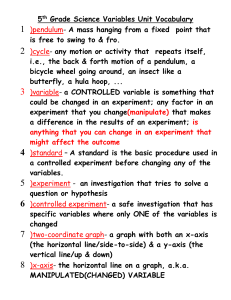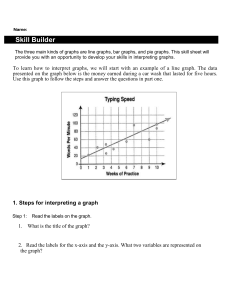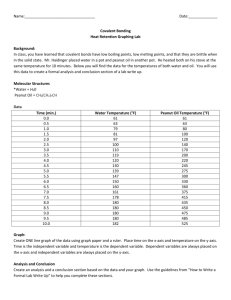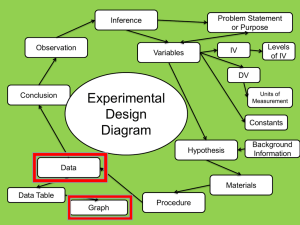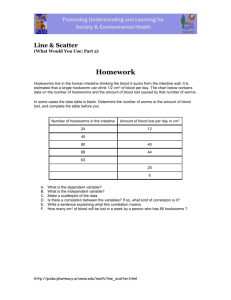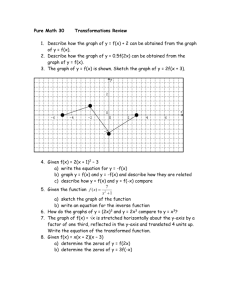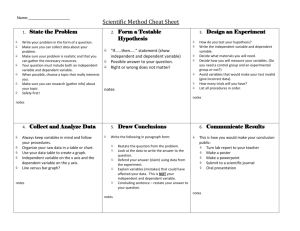Graphing Skills Worksheet: Plotting Data & Creating Graphs
advertisement
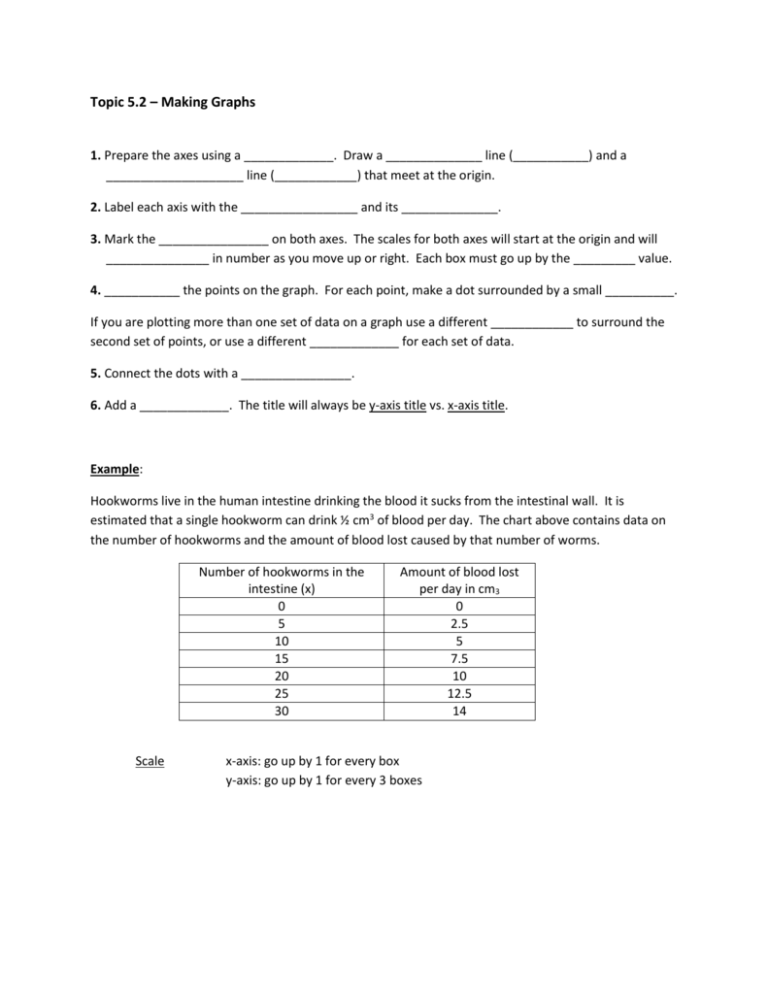
Topic 5.2 – Making Graphs 1. Prepare the axes using a _____________. Draw a ______________ line (___________) and a ____________________ line (____________) that meet at the origin. 2. Label each axis with the _________________ and its ______________. 3. Mark the ________________ on both axes. The scales for both axes will start at the origin and will _______________ in number as you move up or right. Each box must go up by the _________ value. 4. ___________ the points on the graph. For each point, make a dot surrounded by a small __________. If you are plotting more than one set of data on a graph use a different ____________ to surround the second set of points, or use a different _____________ for each set of data. 5. Connect the dots with a ________________. 6. Add a _____________. The title will always be y-axis title vs. x-axis title. Example: Hookworms live in the human intestine drinking the blood it sucks from the intestinal wall. It is estimated that a single hookworm can drink ½ cm3 of blood per day. The chart above contains data on the number of hookworms and the amount of blood lost caused by that number of worms. Number of hookworms in the intestine (x) 0 5 10 15 20 25 30 Scale Amount of blood lost per day in cm3 0 2.5 5 7.5 10 12.5 14 x-axis: go up by 1 for every box y-axis: go up by 1 for every 3 boxes Assignment 1. An oyster farmer has been keeping records concerning the water temperature and the number of oysters developing from fertilized eggs. The data is recorded below: Water Temperature in oC (x) 5 10 15 20 25 30 35 40 Scale: Number of Developing Oysters (y) 75 90 120 165 75 40 15 0 x-axis: go up by 2 for every box y-axis: go up by 5 for every box 2. A scientist studying birds records the total flight of a bird every minute for 10 minutes. Time (minutes) - x 0 1 2 3 4 5 6 7 8 9 10 Scale: Distance (meters) - y 0 15 26 55 89 120 168 195 210 265 300 x-axis: go up by 1 for every 3 boxes y-axis: go up by 10 for every box 3. The thickness of the annual rings indicates what type of environmental situation was occurring at the time of its development. A thin ring usually indicates a rough period of development- lack of water, forest fires, or a major infestation. On the other hand, a thick ring indicates just the opposite. Age of the tree in years - x 10 20 30 40 50 60 Scale Average thickness of the annual rings in cm. - y Forest A 2.0 2.2 3.5 3.0 4.5 4.9 x-axis: go up by 2 for every box y-axis: go up by 1 for every 5 boxes Average thickness of the annual rings in cm. - y Forest B 2.2 2.5 3.6 3.8 4.0 4.5


